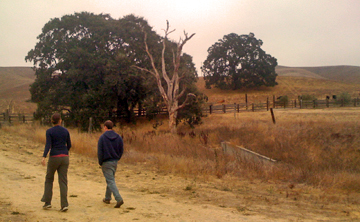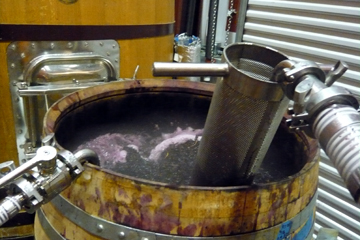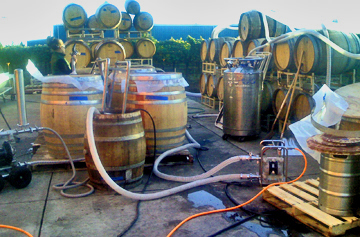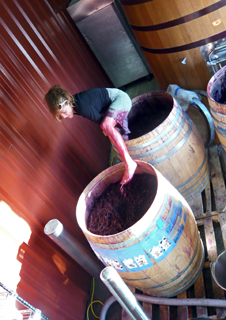2007 Androkteinos Hudson Vineyards




First the name: Lee Hudson, who owns and farms this vineyard, refers to the block from which all the grapes were harvested as “The Widowmaker,” because of a strikingly shaped dead tree at the eastern corner of the vineyard, near the gate and equipment staging area. Lee explains that in the West, such trees are called widowmakers because of the consequences of their loosing a limb on a worker below. He suggested that I use the name of the block for the wine that I made from it, but I declined. The name seemed too obvious, maybe even too crass for a wine. One would have to know about the tree and its idiomatic name not to completely misunderstand why the wine is called widowmaker.
But it was easy for me to promise Lee to use a Greek word that meant the same thing. That word is “androkteinos”—slayer of men. It is a favorite epithet of Hektor in Homer. The wine has some heroic qualities, particularly in scale and intensity. It is very deep and complex, though with none of Hektor’s tragic depth. I think that the intersection of a western eptithet and one of Homer’s will satisfy the grower’s honorable desire.
A note on the winemaking: in 2007, we finally implemented a method I had been inching towards for a few years: all red wine fermentations in wood. (We had to modify this because of an unexpectedly large Babylon harvest in 2008; more on that in the future.) All of the Hudson Syrah was fermented for the first time in a series of pucheons. For the second year in a row, we did only whole cluster fermentations— no destemming, no crushing. We did do cold soaks for almost 10 days, and then tried to speed up the eventual beginning of fermentation by heating the juice that was forming. We kept the fermentations hot, close to 95 degrees F, until they were nearly dry. We punched them down by going in the puncheons four times per day until the same time, then went down to one per day. We kept them on their skins for a few more days, and then drained the wines to barrel without pressing.
70 cases bottled